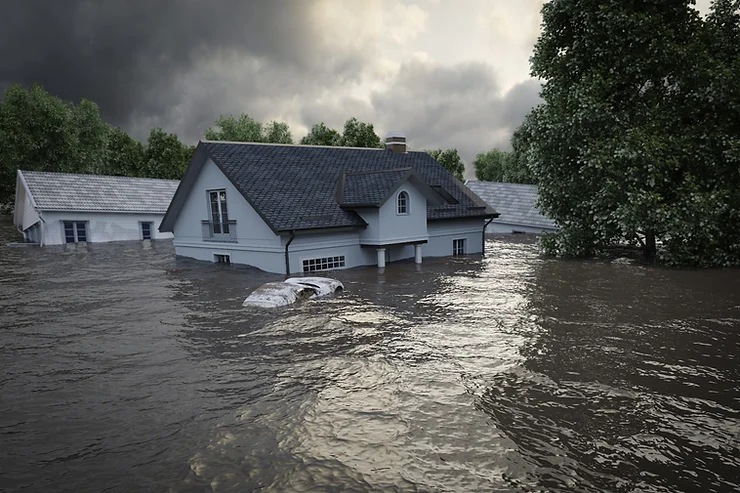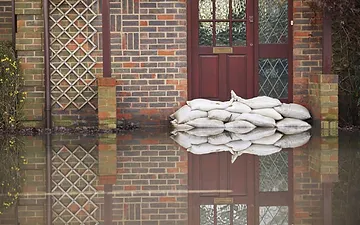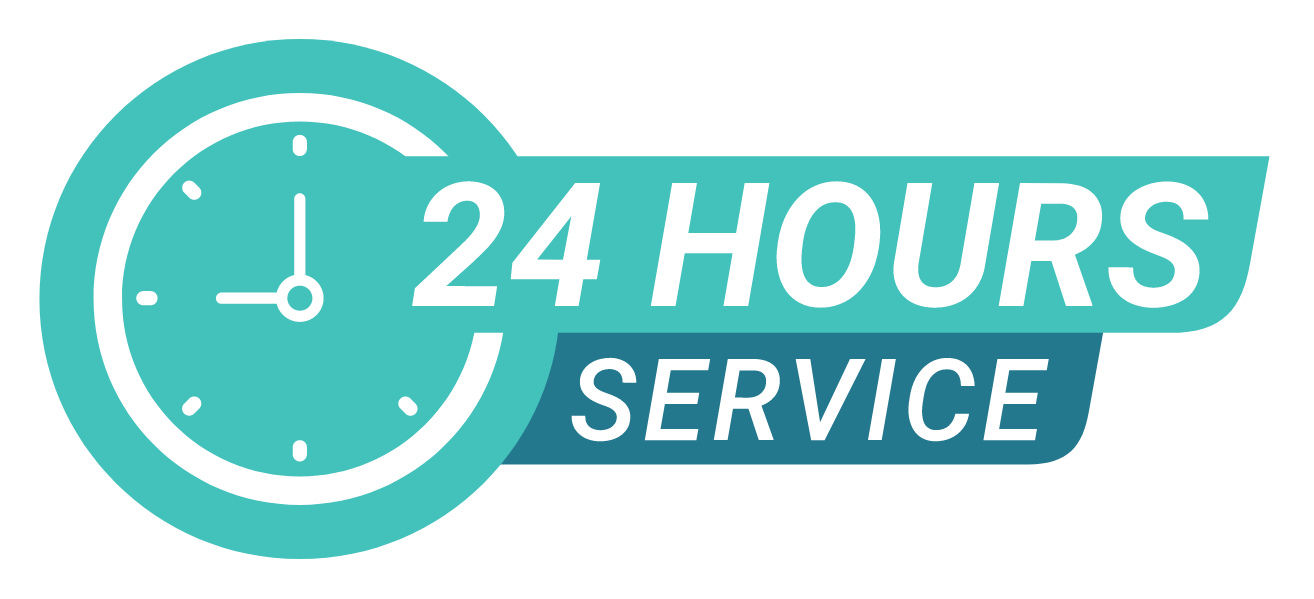When you think about water damage, what comes to mind? For many, it’s the images on the news showing complete devastation to homes after hurricanes such as Harvey and Katrina. The unpleasant experience of home water damage is a very real risk to property owners in the Maryland, Virginia, and Washington, DC metropolitan corridor – and not just for those that live in a flood zone.

Texas home suffering extreme water damage after Hurricane Harvey in 2017.
Over the span of a 30+ year mortgage, it’s almost guaranteed a home will sustain a significant water damage. This can be caused by outside sources– like storms or fast rising water, or by inside sources– such as pipe breaks or appliance leaks. However, practicing common sense prep tips and good home maintenance can drastically reduce your personal and financial loss from water damages.
Chances are if you own a home, you also have a homeowner’s insurance policy…but do you know exactly what your insurance does or doesn’t cover? Taking a few minutes once or twice a year to review what kinds of damages are or aren’t covered is a useful exercise. Oftentimes, water damages caused by sudden, accidental leaks from pipes or appliances are covered…but you may be stuck with a bill in the event of a long term leak or a certain kinds of sewer pipe backup. Additionally, you may have some coverage for heavy rain, but unless you live in a flood zone, you probably don’t have property coverage for flooding. Even though walking into a basement deluged by a pipe leak may feel like flooding, the term “flood” in insurance lingo refers specifically to your home being breached by rising water from the ground up; or elevated waters from streams, lakes, ponds, rivers, oceans, or other bodies.
Do you need separate flood insurance? If you live in a flood zone and are trying to get a loan, your lender will say yes. If you don’t live in a flood zone, please consider that 20% of flood claims come from properties outside of flood zones. According to FEMA, even an inch of flood water breaching your home can lead to $27,000 in damages. Incidentally, FEMA maintains a great interactive map to consult your odds of experiencing

flood within a year You can check it out here. If you have questions about obtaining flood insurance for your property, your insurance agent will be able to get you started, or at least point you in the right direction.
So what’s the big deal anyway? Water is one of the necessities of life– it’s not poisonous, and best of all, it dries on its own–or with a few hours with a shop vac and towels…right? Well…not exactly. Any time you’re dealing with flood water, you’re dealing with a lot of unknowns.
Water damages that originate inside your home comes from a known source– whether it’s from a pipe leak, or an appliance overflow, or otherwise. In water damage restoration, we would usually consider these to be within one of two categories. The first is Category 1 water, which originates from a clean and sanitary source (such as a water supply line in your home) and is not considered harmful in any way. Or – Category 2 water, which is gray water that contains some known contaminants. This can also be clean water which has degraded after sitting for a period of time, mixing with building materials and soils.
When you’re dealing with floodwaters, there’s no telling what sorts of pollutants or pathogens the water contains. Water rising from the ground up can contain mud, chemical runoff, pesticides, oils, and other wastes. This also comes with harmful microbes, bacteria and/or poisons. For that reason, we in the restoration biz always consider flood waters to be rated Category 3 or grossly contaminated water– on par with raw sewage (and yes, flood water can have that too). Even though the news often shows imagery of people wading or swimming through floodwaters after a large storm, flood water in or outside your home should be treated as a serious hazard to your life and property and avoided by all means necessary.
If you already live in a flood zone, you’re likely already familiar with common ways to prevent flood damage to your property. However, if you live outside of a flood region, you’ll probably want to take heed of some ways to prevent flood damage to your property.
One of the first steps you can take is ensuring you have one or more sump pumps installed at your property and that they’re in good working order. A sump pump works to move rising water away from your property to an area where it won’t cause damage. You’ll want to regularly test your sump pump’s battery. While sump pumps run off your

home’s power, they typically have a backup battery to ensure the pumps stay running in the event of an electrical failure. In general, pumps should be inspected yearly to ensure they are in good working order.
You may be able to self-inspect your own sump pump, but a trusted plumber can also test your pumps as well. Your plumber can also inspect your drains to minimize the chances of backups during heavy rain events, and even check and install backflow protection. In a flood event, municipal sewer systems can become overloaded and backup into homes without sufficient backflow protection valves. These ensure water only flows one way– away from your home.
Next you should ensure that everyone in your household is able to shut off main utilities, including water, gas, and electricity. Being able to disconnect these in a disaster will help ensure that secondary damages such as fires don’t arise if the worst strikes.
As you might expect, your basement is the most vulnerable place in the event of a flood. In rising waters above 3 feet high, floods can cause damage to masonry and foundations. This damage is amplified if you have existing foundation issues such as cracks or leaks. You should avoid keeping valuables or important documents in your basement where there is a chance of flooding. Keep gutters and downspouts clean and cleared to avoid water ponding around the foundation and causing undue wear and tear. Regularly inspect your foundation and basement for signs of damage and have cracks and leaks repaired as soon as possible. If you’re prone to basement seepage or flooding, you may find it a worthwhile investment to enlist a qualified landscaper to assist with directing the flow of water away from your property.
Lastly, invest in the creation of an emergency kit. Your kit should contain sufficient supplies for you and members of your household for 72 hours. This should include:
- Water and food: Aim for sufficient non-perishable food (and a can opener) and 1 gallon of clean water per member of your household per day.
- Flashlight: With extra batteries.
- Emergency weather/NOAA radio: An all-hazards alert radio with audible alerts will keep you apprised of updates in rapidly changing weather conditions and possible evacuations. You should consider a model that is either battery or hand-crank operated. Audible alerts will go off when an emergency is affecting your specific region.
- A well-stocked first aid kit, any necessary medications or prescriptions, and personal hygiene products.
- Copies of important documents, such as insurance policies, stored in a plastic bag or similar waterproof container.

In the unfortunate event that flood damage is imminent, the most important thing you can do is ensure the safety of all occupants of your home and take heed of evacuation orders. Remember to shut off your water, gas, and electricity before evacuating your home, if possible. When returning home (after it’s been declared safe to do so),
you’ll want to immediately assess your home for damage. In addition to standing water from flooding, you should also check for structural damage from high winds, fallen trees and limbs, and other storm debris. These types of damages often include roof breaches, missing shingles, and broken glass/windows. Keep an eye out for downed utility lines caused by fallen trees and alert your local electrical company about the issue.
As mentioned previously, flood water should be presumed to be contaminated and extremely hazardous. If your home is suffering from flood water damage, you should take all precautions and wear gloves and protective gear to avoid contact with the contaminated water. The daunting task of cleaning up flood water is often a job for a qualified restoration firm, such as Tri State Restorations, and as a bonus will often also perform emergency roof tarping and board-up services for broken windows.
Water damage is an emergency that requires immediate attention. The longer water is left to sit, the greater the chances of secondary damages such as mold growth, structural damage, and dangerous levels of bacterial growth as well. You should hire a water damage restoration firm as soon as possible– don’t wait. Your first instinct may be to wait for a claims adjuster to arrive and give advice. However, in catastrophic events, you might be waiting weeks for your insurance company due to the higher than average number of claims in your area. A competent restoration firm will document all conditions of loss at the time of service and work quickly to minimize the threat of secondary damage, lowering the overall cost of property damage. You should also take your own photos and videos of your damaged belongings, and make lists of any property destroyed in the flood.
In addition to documenting the loss, a restoration firm will take detailed measurements of moisture and humidity throughout your home to ascertain the extent of flood damage and create a customized drying and sanitation plan for your property. They will work quickly to extract any standing water leftover from the flood, and then will carefully remove contaminated building materials that may have been affected such as carpet and drywall. If you have belongings and contents adversely affected by floodwaters, they will catalog and inventory these items and help you determine whether or not they can be safely cleaned and salvaged, or if they must be discarded.
Next, the affected areas of your home will be thoroughly cleaned and sanitized to inhibit any mold or bacterial growth, and equipment will be set to assist with pulling residual moisture from the structure. Keep in mind, it may take several days of drying with specialized fans and dehumidifiers in order to restore you to an appropriate level of humidity and moisture. Even if a surface feels dry to your hand, it may still be considered wet based on the readings that the technicians take. This is because water becomes absorbed into materials– particularly high-porosity materials such as wood and drywall, and stays inside the material until coaxed out via evaporation. Incidentally, incomplete drying is another culprit that contributes to mold growth. For information about how mold growth sets in, read more here.
We’ve compiled a list of resources to assist you with the before’s, during’s and after’s of flood damage here:
- Hurricane Planning in the DC Area
- Preventing Storm Damage
- FEMA – National Flood Insurance Program
- Build a Ready Kit
- NOAA Active Alerts
- Hurricane Safety – via Hurricane Science
- Hurricane Safety – via FEMA
Tri State Restorations is always standing by to assist you with your flood-related emergencies. We are staffed 24 hours a day with IICRC-certified water remediation technicians who are qualified to answer any questions or address any concerns you may have about flooding emergencies in your property. Call us today – 866-818-1949. We are proudly certified by the IICRC, the Indoor Air Quality Association, and the EPA.
#hurricaneprep #hurricanedamage #flooddamage #waterdamage #waterrestoration #hurricaneplanning #stormdamage #hurricanesafety
Sharing is caring!







